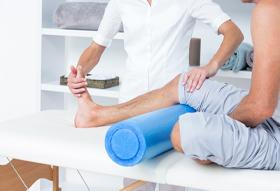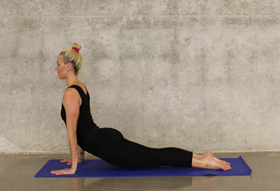
Foam for physiotherapy

It is a well-known fact that foam is used by athletes around the world to assist with their post-training recovery. However, foam is also widely used by physiotherapists to assist with a range of treatment and recovery programmes for all types of individuals. People need not be athletes to encounter the positive benefits brought by different types of foam components.
There are a number of reasons why physiotherapists continue to use and recommend treatments assisted by foam. Used to improve an individual’s range of motion, foam rollers, for example, are commonly used to reduce tension and stimulate the nervous system to encourage your brain to release muscle tone. After a few minutes of foam rolling, muscle motion is already significantly improved. However, foam rolling isn’t the easiest type of physiotherapy, as depending on which area is targeted on the body, it can require moderate levels of muscle strength and control.
In physiotherapy settings, foam is commonly perceived as an assistive tool that complements other treatments such as acupuncture, stretching and deep tissue massage. However, foam components are only used in types of physiotherapy that target certain areas of the body. In most instances, for example, foam rolling is used on the glutes, mid-back and quadriceps as this is where it is proven to be most effective. Yet this does not mean that other foam components cannot be used elsewhere on the body.

Alongside foam rollers, foam blocks are a popular choice for physiotherapy exercises. Most notably, these are used to assist with both core and stability exercises due to their incredible versatility. Most frequently, foam blocks are used to modify certain elements of physiotherapy exercises to make them easier or more challenging, depending on need. Placed under the hands, feet or spine, they ensure correct alignment of the body for physiotherapy exercise to provide the greatest benefit.
For example, foam blocks are frequently used in exercises such as ‘Down Dog’ and ‘Child’s Pose’ which you may be familiar with through Yoga practice. In both of these poses, foam blocks can be placed under the hands to aid with reduced stretching exercises, which may be useful for those needing to work certain muscles without fully maximising them. Similarly, using these blocks still ensures that the individual builds on their core strength without compromising on their comfort or safety during muscle recovery.
Components used in physiotherapy are frequently made from high-density polyethylene foam such as EFP30 Closed Cell foam that is incredibly durable and strong to support bodyweight. Furthermore, it is easy to clean and has antibacterial properties, making it a hygienic option for physiotherapy settings. The most popular types of foam physiotherapy aids come in many shapes such as square and rectangular blocks cut to size, rollers (both smooth and ridged), spheres and semi-circle spheres. As expected, the most popular foam components used by physiotherapists have at least one flat side, making them most suitable for a range of stability exercises that help to reduce accidental sudden movements.

eFoam is the UK’s leading supplier of foam for physiotherapists and is able to make any shaped component to custom specification. This includes variations in size, shape, density and material. eFoam proudly supplies foam materials to physiotherapy patients, large organisations and independent physiotherapists. Should you require any assistance, please contact one of our friendly advisers.

